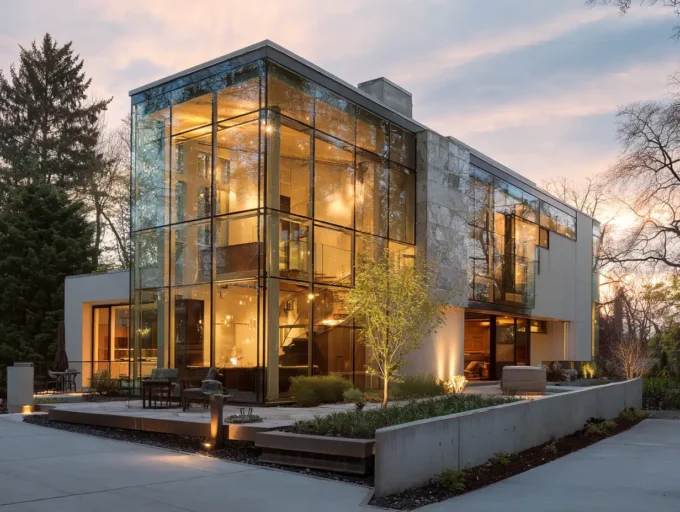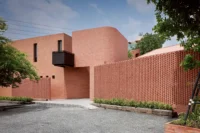When we think about architectural aesthetics, wooden cabinets might not be the first element that comes to mind. Yet, these timeless pieces play a crucial role in shaping the ambiance and functionality of our spaces. From sleek, modern designs to rustic, traditional styles, wooden cabinets offer a versatile palette that complements various architectural themes.
Their natural texture and warmth can transform a room, creating a harmonious blend between nature and structure. As we explore the role of wooden cabinets in architecture, it’s essential to appreciate how they contribute to both the visual appeal and practical utility of our homes and workplaces. They don’t just store our belongings—they tell a story of craftsmanship and design that enhances the overall aesthetic.
In a world where design trends come and go, wooden cabinets remain a steadfast choice for architects and designers. Let’s delve into how these enduring elements continue to influence and elevate architectural aesthetics.

The Historical Significance of Wooden Cabinets
Wooden cabinets have played a vital role in architectural aesthetics through history. Beginning in the Renaissance period, these cabinets were crafted as symbols of wealth and status. Artisans used intricate designs to showcase craftsmanship and artistic skill, enhancing the visual appeal of interiors. In the 18th century, colonial America adopted wooden cabinets using native timbers like cherry and walnut, making them an essential element in homesteads, reflecting the cultural and regional influences of the time.
As we moved into the 19th century, the Arts and Crafts movement celebrated the beauty of functional design. Wooden cabinets became integral to this aesthetic, emphasizing simplicity, quality materials, and handiwork. Traditional joinery techniques, such as mortise and tenon, added durability and character, which have influenced modern cabinetry style. Mid-20th-century design trends saw the return of wood in Scandinavian minimalist approaches, focusing on clean lines and functionality, demonstrating wood’s adaptability over time.
Today, we observe a resurgence in appreciation for wooden cabinets due to their timeless appeal and sustainable characteristics. Designers often look back at historical styles for inspiration, thus keeping the legacy of wooden cabinetry alive.
Design Versatility of Wooden Cabinets
Wooden cabinets offer a remarkable level of design versatility, enhancing diverse architectural aesthetics. They adapt effortlessly to various styles, whether modern or classic.
Styles and Trends
Architects and designers appreciate the ability of wooden cabinets to align with both current and timeless styles. In contemporary homes, sleek and minimalist cabinet designs often incorporate wood’s natural grains for a blend of modern and organic appeal. In contrast, traditional settings benefit from ornate carvings and rich stains, reflecting time-honored craftsmanship. The farmhouse trend’s rise has rejuvenated interest in rustic, weathered finishes. These cabinets display adaptability across diverse design scopes, supporting shifting interior aesthetics.
Material Choices and Finishes
The variety of wood types and finishes available contributes to wooden cabinets’ versatility. Oak, maple, and walnut are popular choices, each providing distinct textures and colors. Custom finishes include everything from clear lacquers highlighting natural wood grain to stained or painted options for vibrant looks. Advanced techniques enable cabinets to mimic other materials, offering more design possibilities. Eco-friendly finishes further enhance the appeal, aligning with sustainable design practices. This diversity allows wooden cabinets to meet varying aesthetic and environmental preferences, enhancing architectural beauty.

Wooden Cabinets and Spatial Functionality
Wooden cabinets play a pivotal role in maximizing spatial functionality. Their design complements not only the aesthetic value but also enhances utility within various environments.
Storage Solutions
Wooden cabinets offer diverse storage solutions. In kitchens, they house cookware and pantry items, keeping spaces organized and clutter-free. In living rooms, display cabinets showcase collectibles or books while maintaining a tidy appearance. Bathroom cabinets hold toiletries and cleaning supplies, improving accessibility and functionality. Their customizable nature, with adjustable shelves and a variety of size options, allows us to tailor storage to meet specific needs.
Space Optimization
Effective space optimization relies heavily on strategically positioned wooden cabinets. In smaller spaces, vertical cabinets utilize height to maximize storage without consuming floor area. Corner cabinets exploit typically underused areas, offering additional storage without compromising living space. Open shelving within cabinets creates the illusion of more space, providing visual depth. Thoughtful design incorporating wooden cabinets ensures efficient use of space, accommodating both design ambitions and practical requirements.

Impact on Architectural Aesthetics
Wooden cabinets significantly influence architectural aesthetics, bridging functionality with visual allure. These cabinets serve as pivotal design elements, shaping the overall ambiance of a space.
Harmonizing with Interior Design
Wooden cabinets seamlessly integrate with diverse interior designs. In modern spaces, cabinets with clean lines and minimal hardware emphasize simplicity and elegance. By contrast, traditional interiors often feature cabinets with intricate moldings and classic finishes, adding character and depth. The adaptability of wooden cabinets allows them to enhance any room’s style, whether it’s a sleek, urban loft or a cozy, rustic farmhouse. By choosing finishes and wood types that align with the existing decor, we ensure that cabinets complement rather than overshadow other design elements.
Enhancing Visual Appeal
The visual appeal of wooden cabinets lies in their ability to highlight the natural beauty of wood. Grain patterns and color variations create a unique and inviting atmosphere. In open-plan designs, strategically placed wooden cabinets can define areas while maintaining cohesion across the space. Dark wood tones, such as walnut or cherry, can add a sense of luxury and warmth, whereas lighter woods, like oak or maple, lend themselves to airy and bright environments. Customized detailing, from paneling to hardware selection, further enhances the aesthetics, making wooden cabinets standout pieces in any architectural setting.

Sustainable and Eco-Friendly Options
Wooden cabinets offer sustainable and eco-friendly choices that align with modern environmental goals. Sourcing materials responsibly ensures that we reduce deforestation and support renewable forestry practices. Certified woods, like those endorsed by the Forest Stewardship Council (FSC), guarantee that we use products from well-managed forests.
Reclaimed wood presents an alternative that promotes recycling, which lessens resource demand and minimizes waste. Using reclaimed materials, we infuse our spaces with a sense of history and character, adding both aesthetic and ecological value to architectural designs.
Eco-conscious finishes enhance the sustainability of wooden cabinets. Using water-based stains and sealants, we limit volatile organic compound (VOC) emissions, creating healthier indoor environments. Low-impact manufacturing further reduces environmental footprints, resulting in products that satisfy both design aspirations and sustainability criteria.
Durability constitutes another eco-friendly aspect of wooden cabinets. Longevity minimizes replacement needs, conserving both resources and energy. High-quality craftsmanship ensures that wooden cabinets withstand time, making them a sustainable investment for any space.
Conclusion
This section provides a concise wrap-up of our exploration into the role of wooden cabinets within architectural aesthetics. Our discussion emphasized their enduring appeal and the way they integrate both design and functionality into various spaces. We noted how their versatility allows for seamless adaptation across modern and traditional styles, reflecting craftsmanship and adding warmth to interiors. Furthermore, our analysis of historical and contemporary trends underscored their status as indispensable elements in architectural design, bridging past influences with present demands for sustainability and aesthetic enhancement. Through this overview, we’ve highlighted wooden cabinets as essential components that enrich architectural spaces while meeting aesthetic and practical needs.















Leave a comment